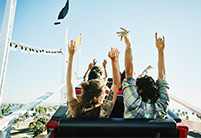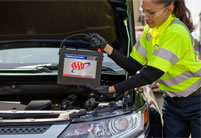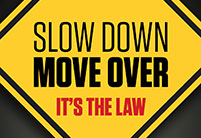Don't drive with snow stacked on your car
Don't drive with snow stacked on your car

When winter blankets your car in snow, the urge to clear just enough to see through your windshield can be tempting. However, this shortcut puts both you and other drivers at serious risk. Snow left on your vehicle – especially on the roof – can become a deadly projectile while driving, suddenly sliding onto your windshield and blocking your vision or flying off to endanger vehicles behind you.
Safety first: Understanding the risks
Before we dive into snow removal techniques, let's address the most critical safety concerns:
- Visual hazards: Snow left on your car's roof can suddenly slide forward onto your windshield while braking, instantly blocking your view of the road. Additionally, chunks of snow and ice flying off your vehicle can startle other drivers or cause accidents.
- Legal implications: Many jurisdictions have laws requiring drivers to remove all snow from their vehicles before driving, with substantial fines for non-compliance.
- Carbon monoxide danger: A snow-blocked tailpipe can force deadly exhaust fumes back into your vehicle's cabin, potentially leading to fatal carbon monoxide poisoning. Always clear your tailpipe before starting your engine.
Essential tools for safe snow removal
To properly clear your vehicle without causing damage, keep these items on hand:
- A snow brush with soft bristles (never use a shovel on your car)
- An ice scraper for the windshield
- A shovel (for clearing around the car only)
- A stepladder for taller vehicles
Step-by-step snow removal process
Create your workspace
Start by shoveling a path around your vehicle's perimeter. This gives you room to work and provides space for rocking the car if it becomes stuck. Don't wait for snowplows – they often end up piling more snow around street-parked cars.
Clear from top to bottom
Begin with your car's roof, using only a proper snow brush or soft-bristled broom. Despite the temptation, never use a shovel on your vehicle – it will damage the paint and glass. Work methodically downward, ensuring you remove all snow and ice.
Critical safety checks
- Clear the tailpipe completely before starting the engine
- Ensure all doors can open, focusing first on the driver's door
- Remove all snow from windows, mirrors, and lights
- Carefully free windshield wipers without bending their frames
Stuck? Tips for getting mobile
Once your car is snow-free, focus on breaking free from your spot if the snow and ice has you stuck:
Remove snow from around all four wheels and under the car
- Keep front wheels straight for better traction
- Rock gently between reverse and drive if needed
- Never spin wheels wildly – this can damage your transmission
- Use kitty litter, sand, or salt for extra traction if necessary
Winter preparation tips
The best defense against winter weather is preparation. Do the following to make sure your car is ready all season:
- Have your vehicle inspected by a qualified mechanic
- Check tire tread and consider snow tires
- Keep emergency supplies in your car
- Store proper snow removal tools in your vehicle
Remember: Taking an extra few minutes to properly clear your vehicle of snow isn't just about your safety – it's about protecting everyone on the road. Those few minutes could prevent a serious accident and potentially save lives.
Driving skills and experience are critical behind the wheel, especially in the winter. Prepare yourself or someone you know with professional driver training from AAA.










